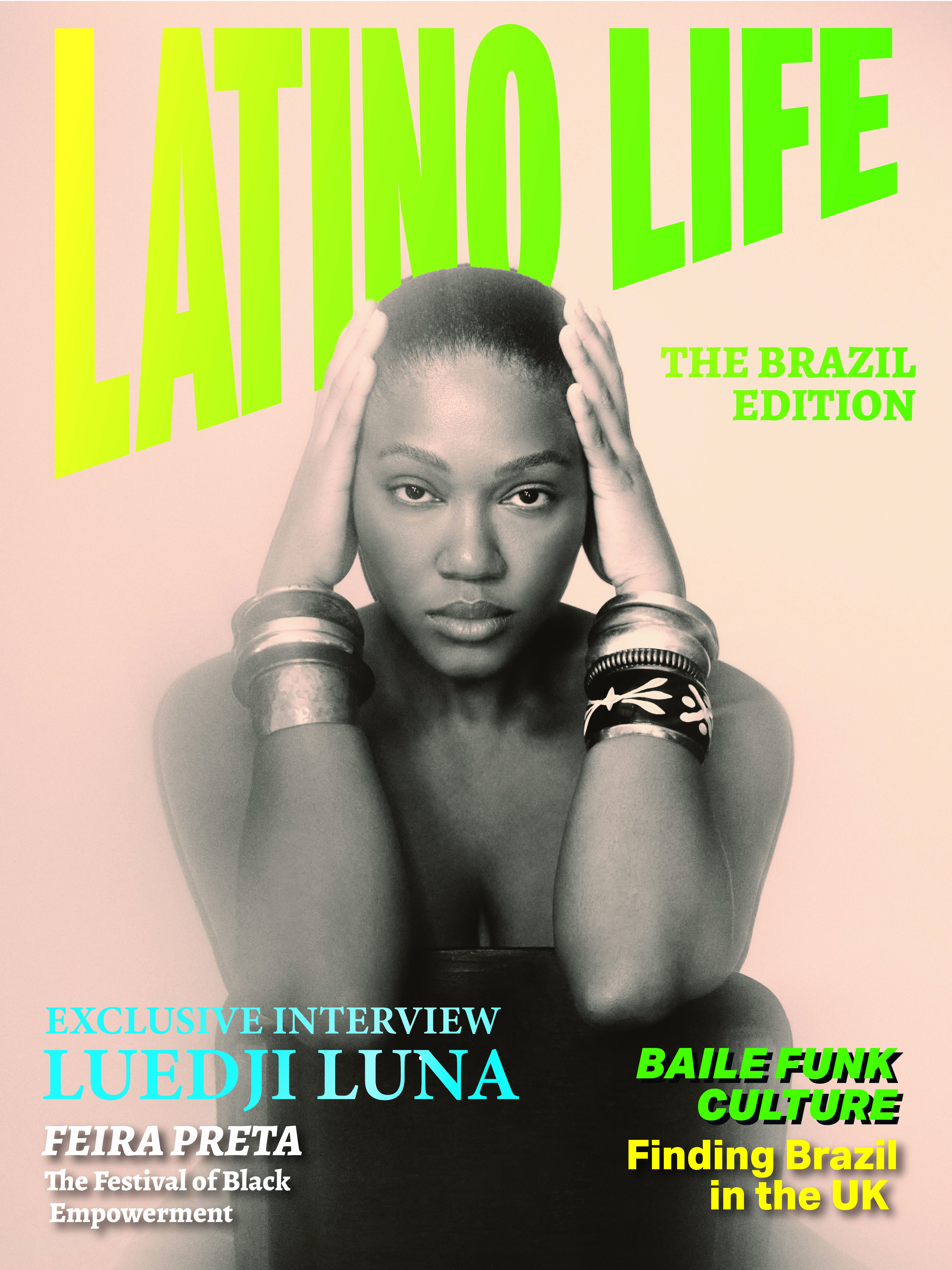60 Years of Getz/Gilberto
The album the made Brazilian Music a worldwide phenomenon. When American saxophonist Stan Getz and Brazilian guitarist Joao Gilberto got together to sing the songs of composer Tom Jobim, it was a musical love triangle made in heaven. Released in March 1964 by Verve Records, the album featured the vocals of Astrud Gilberto on The Girl from Ipanema and Corcovado, engraving those songs onto the global consciousness forever more. It received a Grammy Award for Records of the Year, launched Astrud Gilberto's career and saw the worldwide birth of a new musical genre: bossanova
50 Years of Ismael Rivera’s Traigo de Todo
Traigo de Todo, is still considered a music masterpiece half a century after it was released in 1974. After a 4 year hiatus, Maelo, as Rivera was affectionately known, delivered an album had a deep impact on the salsa genre, showcasing a more “cuban” sound, away from the trombones that were all the rage at the time. With his indistinguishable smokey voice, with a its slurry, unpolished quality, but immaculate timing Maelo was a kind of vocal Theolonius Monk. With words and a delivery that pull heart strings, the album delivered a string of hits inclusing El Nazareno, reflecting on his religious beliefs, Traigo de Todo, and Yo No Quiero Piedra En Mi camino. With this album became a classic that eventually would make Maelo one of the greatest salsa icons, the canon when it came to “soneo” (salsa singing improvising).
50 Years of Celia Cruz and Johnny Pacheco’s Celia & Johnny
This seminal album brought together the Queen of Salsa and the Dominican maestro for the first time on record. Released in 1974, it featured hits like "Quimbara," which still is one of the salsa’s defining songs and Celia’s most enduring hit. Its significance was further recognized when the Library of Congress added it to the National Recording Registry, honouring it as "culturally, historically, or aesthetically significant," emphasizing the album's lasting impact on music and culture.
50 Years of Dimensión Latina’s Dimensión 75 feat. Oscar D’ Leon
Venezuela’s most iconic and successful salsa band for many years. Dimensión Latina's album Dimension 75 featuring the legendary Oscar D’ León on vocal and bass, gave us the hit Llorarás. So no more: if it was only for that reason, it would be a defining salsa anthem. It also made a superstar of Oscar D’Leon, the dancing showman on the bass, whose dynamic vocals, would make him Venezuela’s most successful touring artist fpr decades to come, still touring the world today. The band's vibrant two-trombone based sound, which was was championed by Palmiero, Mon Rivera and later copied by Willie Colon, made this album a cornerstone in salsa history, influencing generations of musicians and dancers worldwide.
40 years of Soda Stereo’s Soda Stereo
Launched in the basement of a Buenos Aires fast-food restaurant Pumper Nic, the legendary Argentine rock band’s debut album caused shock waves throughout the continent and revolutionized Latin American rock. Heavily influenced by British new wave and post-punk and Argentina’s own distinctive brand of rock, it’s fresh sound reshaped the creative landscape. The songs, such as Dietetico. Te Hacen Falta Vitaminas, Por que no puedo ser el Jet-Set, Tele-Ka, Sobredosis de Tv and Trátame suavamente, all written by charismatic frontman Gustavo Cerati, went on to become hits all over Latin and continue to resonate, influencing new generations. The band's ability to fuse diverse styles into a cohesive and dynamic sound marked a turning point, establishing a legacy that transcends time and geography. #SodaStereo40 celebrates not just an album but a pivotal moment in music history. Sadly, 2024 also marks 10 years since the tragic death of lead singer Cerati.
40 Years of Rubén Blades and Seis del Solar’s Buscando América
Another child of Latin America’s turbulent political and social times, this album redefined salsa through a potent mix of dancefloor hit-making with poetry and political and social commentary. Released to critical acclaim, it was the album that relaunched the Panamanian singer-songwriter's career after he left Fania records. But more than that, Blades' compelling storytelling, innovative New York sound and themes of injustice and inequality, brought social consciousness to the dance floor. Songs like El Padre Antonio, about the murder of El Salvador’s people’s priest, Desapariciones talked about the disappeared of Argentina, showed Latin America that Latinos in New York saw its pain. Songs like Decisiones, about every day decision-making, ralted to ordinary lives while, The final song Buscando America, was a call to action that united the whole continent. This album made salsa popular all over Latin America for the first time, solidifying the idea of a Latin Nation. Blades' lyrical prowess combined with dance floor rhythms, brought by the all-star ensemble, turned "Buscando America" into one of the most iconic salsa albums to date. Decades later, it remains a testament to the power of music as a catalyst for change and a timeless classic in Latin music.
40 years of Los Prisioneros’ La Voz de los ‘80
An emblematic work that revolutionized Chilean rock. This seminal album challenged the status quo with its direct lyrics and raw sound, reflecting the socio-political unrest of the era, with Chile still under Pinochet’s regime. Songs like La Voz de los '80 and ¿Quién mató a Marilyn? became anthems of a generation of Chile and Latin Americans, voicing the struggles and dreams of youth. The band's fearless approach and undeniable talent left a lasting impact, making this album a cornerstone in Latino rock history and a symbol of resilience and artistic expression.
40 Years of Grupo Niche’s No Hay Quinto Malo
A landmark in salsa music and culture, No Hay Quinto Malo by Grupo Niche injected a unique "swing" and vitality into Colombian Salsa. Renowned for its enduring popularity, the album boasts classics like Cali Pachanguero, Cali's beloved anthem, and other hits like La Negra No Quiere, El Coco, and Serenata. It put a whole new brand of salsa - more romantic, tender and intense - onto the map of Latin American music. This collection is synonymous with dance floor celebration, providing relentless sabor. Its continued relevance and originality echo the group's profound connection with Cali's rich salsa heritage, and showed the world the musicality of a country that would provide hypnotic and come to dominate the entire music world, through its interpretation of reggaeton in years to come.
30 Years of Selena’s Amor Prohibido
The fourth studio album by the Tejana singer, released on March 13, 1994, was responsible for making Tejano music one of the most popular Latin music genres at the time. Finding it challenging to write a follow-up hit after Como la Flor (1992), Selena's brother A.B Quintanilla enlisted the assistance from band members Ricky Vela and Pete Astudillo with writing the album's songs. The resulting album, blending ranchera, hiphop, and tejana cumbia, modernized with a synthesizer-rich delivery, became the first Tejano record to peak at number one on the Billboard Top Latin Albums chart, remaining in the top five for 98 consecutive weeks. The album holds the record for most weeks at number one on Billboard's Regional Mexican Album chart at 97 nonconsecutive weeks, as well as crowning the chart in four different calendar years. Tragically, a year later, the young beautiful Tejana was dead.
30 Year’s of DJ Playero’s Playero 37
DJ Playero's groundbreaking album ignited the reggaeton movement in Puerto Rico and its diaspora in the US and pretty much marked the before and after for the now global genre. This influential mixtape, released in early 1994, blended hip-hop, Jamaican dancehall and Panamanian reggae and much more, creating a new sound that resonated with youth across Puerto Rico and later worldwide. Tracks from "Playero 37" became the foundation of reggaeton, showcasing the genre's potential and paving the way for future artists. 30 years later, its raw beats and urban lyrics continue to influence, marking its place as a key moment in the evolution of Latin urban music. It also gave a recording debut to a young kid named Ramon Ayala…aka as Daddy Yankee.
20 Years of Daddy Yankee’s Barrio Fino
Fast forward 10 years and Daddy Yankee's ground-breaking album, released in 2004, marked a significant chapter in reggaeton history. It launched the Puerto Rican artist to fame and spotlighted reggaetón on a worldwide scale. The album's standout track Gasolina became a global sensation, epitomizing the genre's mainstream appeal. In hindsight, Barrio Fino represented a cultural landmark, encapsulating the life of the streets of the Hispanic Caribbean and the exuberant spirit of reggaetón. Twenty years on, its legacy endures, solidifying Daddy Yankee's status as a pioneer in Latin urban music. Notably, Gasolina was honoured as the number 50 best song of all time by Rolling Stone magazine, emphasizing the song's and the album's lasting impact.
20 Years of DJ Nelson's Flow La Discoteca
When legendary reggaetón producer released "Flow La Discoteca" 20 years ago, the island of Puerto Rico went crazy. The energetic dance-centric album, featuring icons like Daddy Yankee and Ivy Queen, producers like Luny Tunes and Rafi Mercenario, dropped just as Reggaeton began its global ascent. It not only showcased Nelson's ear for hits but also solidified his status as a tastemaker in a genre ready to revolutionize the music market. The album's energetic beats became a blueprint for reggaetón, underscoring Nelson's role in shaping the genre’s worldwide impact.


















